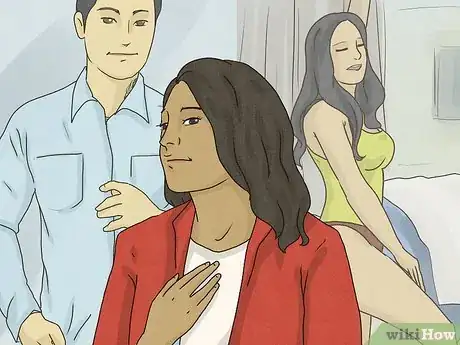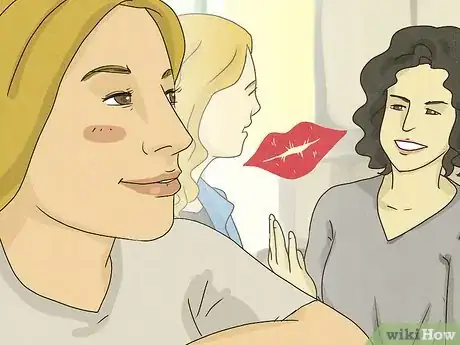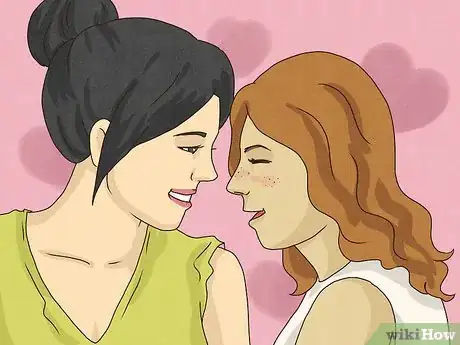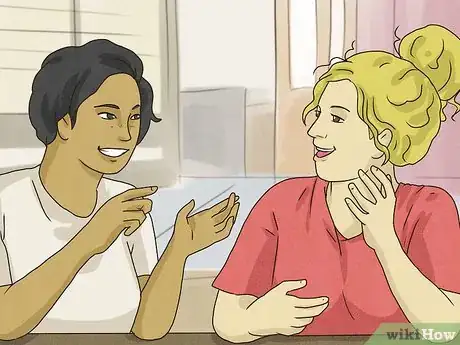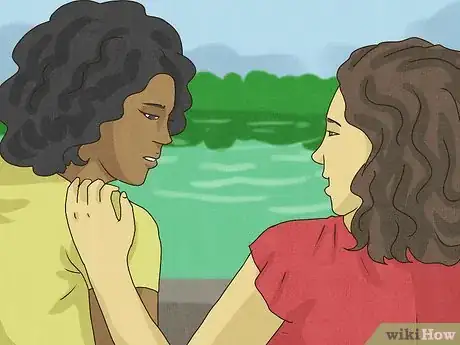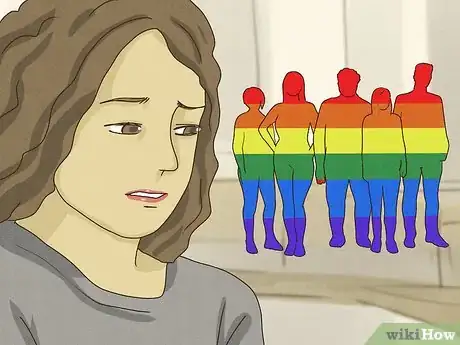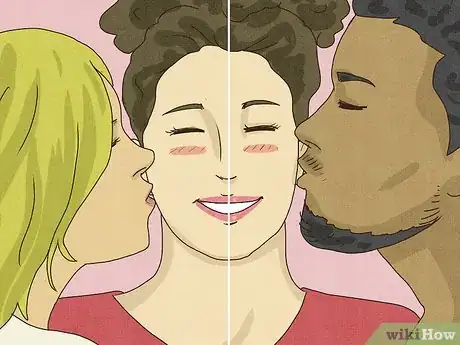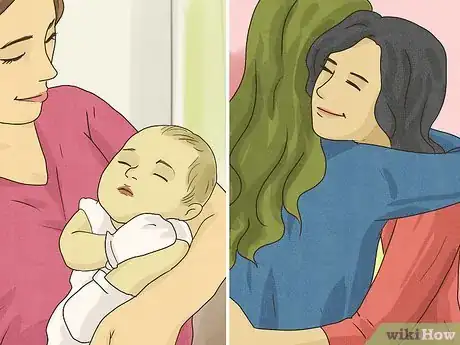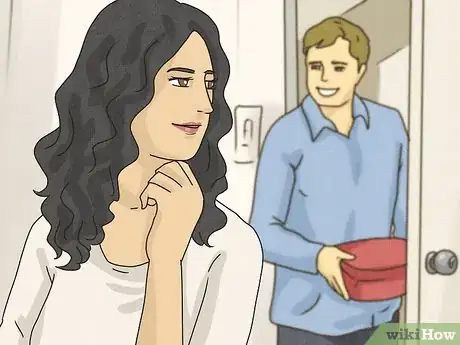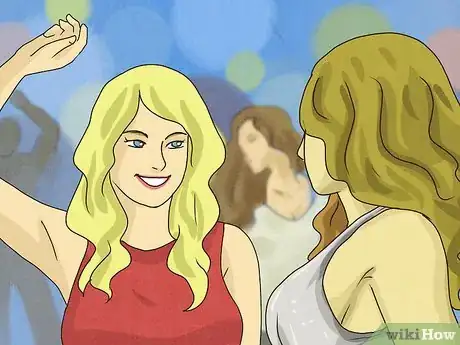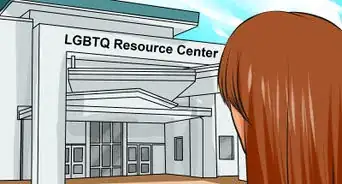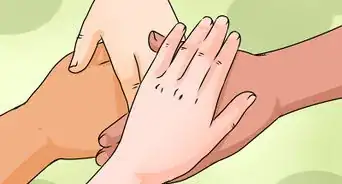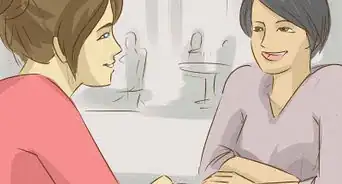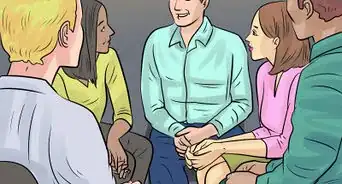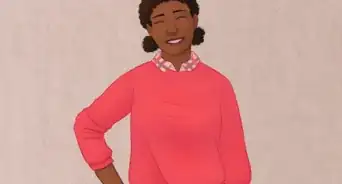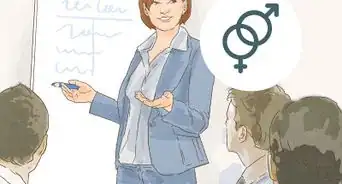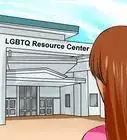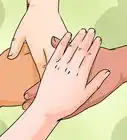This article was co-authored by Marissa Floro, PhD. Dr. Marissa Floro, Ph.D. is a Psychologist and Instructor at Stanford University’s Weiland Health Initiative and adjunct faculty at the University of San Francisco. Dr. Floro received her Ph.D. in Counseling Psychology from Loyola University Chicago, focusing on the intersections of race, attraction, and gender. Dr. Floro’s continued clinical, teaching, and advocacy work focuses on sexual and gender diversity, racial identity and belonging, and liberation from oppressive systems and structures.
This article has been viewed 126,218 times.
As you start questioning your sexuality and discovering yourself, you might wonder, "Am I a lesbian?" Figuring out your sexual orientation can be a confusing process, but it's okay not to have all the answers! Hearing about other people's experiences and exploring how you feel about these concepts can help you grow into a more confident and comfortable version of yourself— whatever that turns out to be. You can also take quizzes, like this one, to help you figure out if identifying as a lesbian feels right to you. However, know that the only person who can know if you're truly lesbian is you.
Steps
Assessing Your Attraction
-
1Think about the people you might be attracted to. It's all right if you're not sure exactly what you're feeling. Take some time to reflect about the people who are causing these feelings by thinking about these questions:
- What thoughts have you had that make you think you might be a lesbian?
- Have you had sexual thoughts about women? What about men or people of other genders?
- If you have been in relationships with men, how was your level of attraction in that relationship? Did you feel motivated to initiate and engage in physical affection/intimacy?
- Do you find women beautiful? Do you think that's an aesthetic appreciation (which anyone can have)? Or does that tie into stronger emotions?
-
2Think about your connection to other women. Have you pictured having a future together with another woman? Maybe even thought you might be in love with one? This doesn't mean you have to call yourself a lesbian, but it's a sign that you might not be fully heterosexual or heteroromantic.[1] These questions might help you explore the idea:
- Have you wanted to kiss, touch, or do something romantic for other women and nonbinary people?
- Have you ever had thoughts about any other genders in this way?
- Which feelings bring you more pleasure?
Advertisement -
3Think back on your actions. Maybe you've actually had experiences with other women, like dates, sexual encounters, or intimate shared experiences that felt romantic. If you are drawn to these experiences and memories, maybe more so than you are to similar experiences with other genders, you might be a lesbian.
-
4Talk to lesbians and queer folks. One other way to help assess your feelings is to talk to lesbian women and women/nonbinary who date women You might want to find out how they realized that they were lesbian or if they always knew, what their same gender attractions were like to them, and if they ever had feelings for certain genders (or men). Try to find someone who you know well enough to be comfortable asking personal questions.
- Think about writing down your questions ahead of time so that you don't forget if you get nervous.
- Make sure that you trust this person so that they don’t out you before you are ready and in a safe situation.
Planning Next Steps
-
1Take your time. After you have taken some time to reflect on your thoughts, feelings, and history, take the pressure off of yourself. Allow these reflections to sit with you and don’t feel that you have to make a choice or tell anyone until you are ready.[2] Even those who support you may unconsciously pressure you to define yourself or make a decision. If you need to, let them know that you're going to take your time and not rush it.
-
2Talk to friends or family if you feel safe. If you have friends or family members that you can trust to support you through this, talk to them about your confusion.[3] Sometimes what seems like a big mystery to us is a lot easier to figure out from the perspective of someone who knows us well.[4]
- You might say something like “Hey Monica, you're one of my best friends, can I trust you with something private? I’ve been wondering if maybe I’m lesbian or not. Have you ever thought that maybe I am?”
- If you're nervous about telling your friends, try finding out what they think about queer topics in general first. Asking them about a recent news article is an easy way to bring this up.
- Don’t talk to your family or friends if you have good cause to feel afraid of their reactions. If you are likely to be abused or cut off financially, protect yourself. However, do find someone to talk to. If you aren't ready to tell anyone you know, try a hotline, online forum, support group, counselor, or therapist.
-
3Know that you do not have to label yourself. At the end of the day, your identity doesn't have to be defined by a word. You and only you are allowed to define yourself, or choose not to. Maybe you need more time to explore, or maybe you're just content to do what makes you happy and not stress over the details. No matter what your situation is, you don't have to decide anything until you are ready.[5]
- If you aren't sure but would like to explore romantic or sexual encounters with women, you can tell people you are "questioning."
- If you are attracted to women but are unsure about the labels (lesbian? bisexual? queer? pansexual? trans and straight?), you could identify as queer, a label that doesn't specify whether you feel a difference in your orientation, gender, or both.
- If you feel like you need a label, consider if the desire is coming from within or because you feel pressured by someone or something. Don't let anyone make you feel forced to decide.
-
4Explore your attractions. Take some time to explore your attractions. Flirt with women/nonbinary folks and see how it makes you feel. Give a guy your number if you like him and want to chat. Consider going on a few dates with people from all genders and see what kind of emotional and physical attraction you experience. But most of all, have fun!
Understanding Sexual Orientation
-
1Consider the sexualities beyond “straight” or “gay.” Attraction is a spectrum, and there are many queer identities besides lesbian. Bisexual individuals are attracted to people of their gender and other genders. Pansexual folks don't consider gender a factor in who they're attracted to.[6]
- Sometimes, confusion over our identity comes from treating sexual attraction and romantic attraction like they have to be the same thing. It's okay to be sexually attracted to someone (or even a whole gender), but not want to become romantic partners—or the other way around. If you want to learn more about this, look up information about being asexual, demisexual, or aromantic.
-
2Know the difference between gender and orientation. A lesbian is a woman or feminine nonbinary person who likes women. That means they both identify as a woman (or a feminine nonbinary person) and are also attracted to women (their sexual or romantic orientation).[7] It might help to think about gender and orientation separately. Does it feel right to call yourself a woman? Does it feel right to say you're attracted to only women?
- You define your own gender identity, not your birth certificate or your genitals (this relates to your assigned sex at birth, not your gender). If people have assumed you are a woman your whole life, but if calling yourself a woman feels wrong or irrelevant, you might be trans. You could look into the trans experience (including nonbinary gender identities).
-
3Accept that sexual orientation can evolve. Your previous attractions don’t necessarily determine your future ones. Orientation isn't necessarily something that changes from Tuesday to Wednesday, or that we can choose to change whenever we want, but it's not set in stone forever either. If you used to feel certain of your identity and orientation, but are less sure now, that doesn't mean you were lying or in a fake relationship. Give yourself time to figure it out and accept yourself in your current form.
- Denying your feelings so that you can comply with the expectations of a label that you've previously applied to yourself can cause mental and emotional harm. It's okay to follow a new path if that's what's right for you.
-
4Accept that you cannot control your sexual orientation. Figuring out that you are a lesbian might be difficult for you. Perhaps your family is very religious, or you are afraid of the backlash you might receive should people find out. No matter your circumstances, however, know that you can’t change your attraction, and that you've done nothing wrong by feeling this way. You are who you are. Work to keep yourself safe, but don’t lose yourself in the process.[8]
- Counseling, support groups, affirmation journaling, and building a support network of allies can all help you stay strong and protect you.
-
5Accept that sexual and emotional attraction are different. Though some people might confuse the two, recognize that sexual and emotional attraction are inherently different. For instance, perhaps you have a friend who is a woman/nonbinary person who you always want to kiss or touch, but you do not necessarily want to go out to dinner with them. Or you may know guys who you would really like to go on a date with. Know that the two attractions are different and assess what is more important to you.
- Also be mindful of the way that straight women and men are primed and conditioned to think about those of the 'opposite' gender. People of all genders are conditioned from a young age to think only about those of the 'opposite' gender in a romantic context. If your feelings for women seem purely sexual, it could be that you don't have a clear idea about what dating a woman would look like. It might be worth trying out romantic dates (or just imagining them) to help you work out if this is the case.
Expert Q&A
-
QuestionI'm stressed because I can't figure out if I'm bisexual, a lesbian, or straight. What can I do?
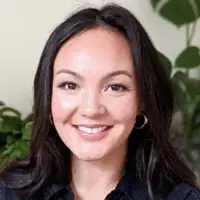 Marissa Floro, PhDDr. Marissa Floro, Ph.D. is a Psychologist and Instructor at Stanford University’s Weiland Health Initiative and adjunct faculty at the University of San Francisco. Dr. Floro received her Ph.D. in Counseling Psychology from Loyola University Chicago, focusing on the intersections of race, attraction, and gender. Dr. Floro’s continued clinical, teaching, and advocacy work focuses on sexual and gender diversity, racial identity and belonging, and liberation from oppressive systems and structures.
Marissa Floro, PhDDr. Marissa Floro, Ph.D. is a Psychologist and Instructor at Stanford University’s Weiland Health Initiative and adjunct faculty at the University of San Francisco. Dr. Floro received her Ph.D. in Counseling Psychology from Loyola University Chicago, focusing on the intersections of race, attraction, and gender. Dr. Floro’s continued clinical, teaching, and advocacy work focuses on sexual and gender diversity, racial identity and belonging, and liberation from oppressive systems and structures.
LGBTQ+ Psychologist Maybe you are one of those things and maybe you aren't. Sexual orientation can change or move in waves. Don't put too much pressure on yourself. Recognize that your attractions and orientation are just one tiny bit of what makes you an individual.
Maybe you are one of those things and maybe you aren't. Sexual orientation can change or move in waves. Don't put too much pressure on yourself. Recognize that your attractions and orientation are just one tiny bit of what makes you an individual. -
QuestionShould I date a girl if she likes me?
 Marissa Floro, PhDDr. Marissa Floro, Ph.D. is a Psychologist and Instructor at Stanford University’s Weiland Health Initiative and adjunct faculty at the University of San Francisco. Dr. Floro received her Ph.D. in Counseling Psychology from Loyola University Chicago, focusing on the intersections of race, attraction, and gender. Dr. Floro’s continued clinical, teaching, and advocacy work focuses on sexual and gender diversity, racial identity and belonging, and liberation from oppressive systems and structures.
Marissa Floro, PhDDr. Marissa Floro, Ph.D. is a Psychologist and Instructor at Stanford University’s Weiland Health Initiative and adjunct faculty at the University of San Francisco. Dr. Floro received her Ph.D. in Counseling Psychology from Loyola University Chicago, focusing on the intersections of race, attraction, and gender. Dr. Floro’s continued clinical, teaching, and advocacy work focuses on sexual and gender diversity, racial identity and belonging, and liberation from oppressive systems and structures.
LGBTQ+ Psychologist Well, are you attracted to her? Do you value her as a person? Are you looking for a relationship? You've got to figure the answers to these questions yourself. But the fact that your potential partner is a woman shouldn't play into this a whole lot. You want to assess the person as a person and forget about any preconceptions that you have.
Well, are you attracted to her? Do you value her as a person? Are you looking for a relationship? You've got to figure the answers to these questions yourself. But the fact that your potential partner is a woman shouldn't play into this a whole lot. You want to assess the person as a person and forget about any preconceptions that you have.
References
- ↑ Marissa Floro, PhD. Counseling Psychologist. Expert Interview. 1 April 2021.
- ↑ https://www.healthyplace.com/gender/gay/how-do-i-know-if-i-am-gay-signs-you-are-gay
- ↑ Marissa Floro, PhD. Counseling Psychologist. Expert Interview. 1 April 2021.
- ↑ https://www.healthyplace.com/gender/gay/how-do-i-know-if-i-am-gay-signs-you-are-gay
- ↑ Marissa Floro, PhD. Counseling Psychologist. Expert Interview. 1 April 2021.
- ↑ https://www.healthychildren.org/English/ages-stages/teen/dating-sex/Pages/Gay-Lesbian-and-Bisexual-Teens-Facts-for-Teens-and-Their-Parents.aspx
- ↑ http://www.apa.org/topics/lgbt/orientation.aspx
- ↑ http://www.apa.org/topics/lgbt/orientation.aspx
